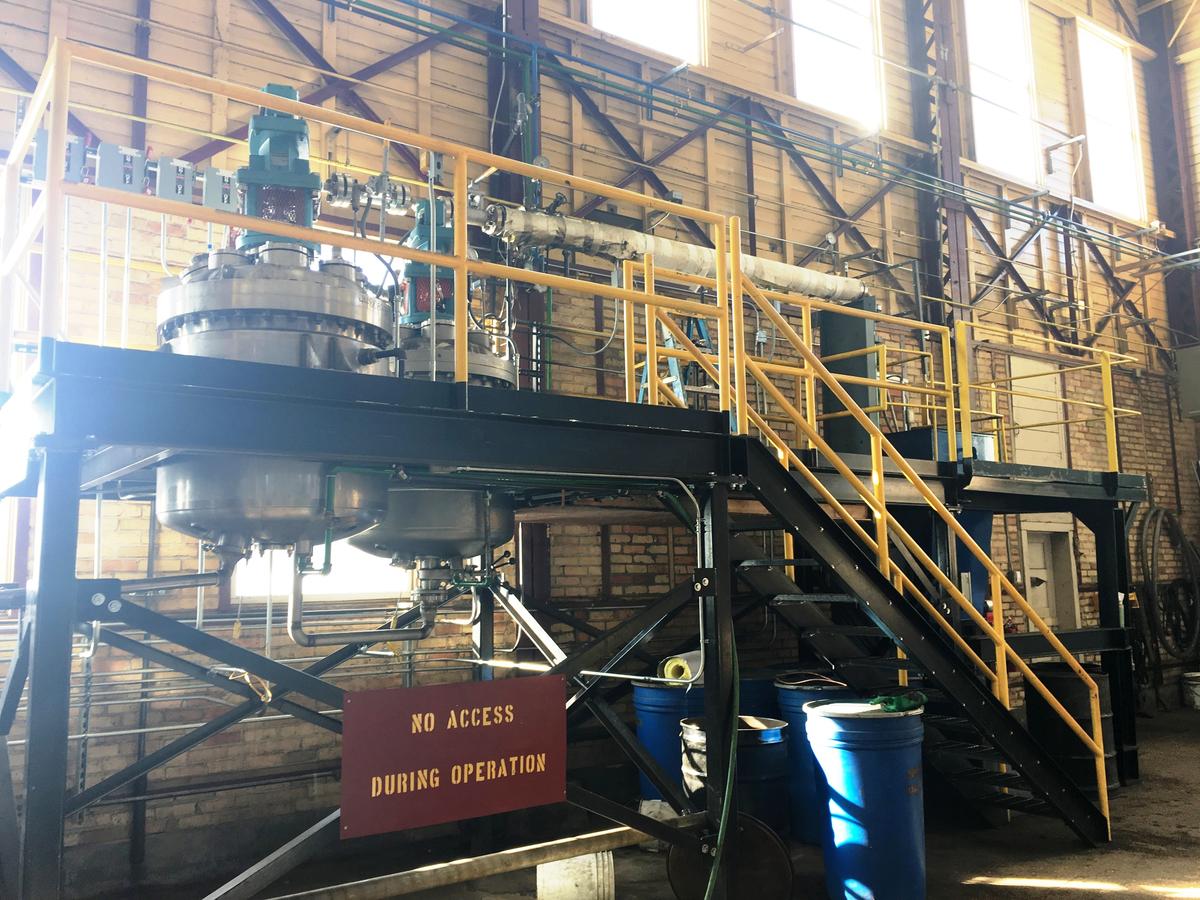Andriy Khotkevych had no problem finding materials for his research.
“I got wood from my backyard. I went into the swamp for cattails. We used corn husks and sugar beet pulp,” then he added with a grin, “We tested cow manure. There are farms around here.”
Khotkevych, a NRRI chemical engineer, started his research in 2012 to develop a process that turns moist, green harvested biomass into a renewable energy product. At the bench scale, hydrothermal carbonization -- a wet, pressure cooker-like process -- successfully produced an energy-dense mud for a variety of applications. Khotkevych experimented with different types of biomass feedstock and process conditions until he had the right “recipes.” In February, he moved the research from the bench to a larger, semi-continuous process pilot unit that can produce 100 pounds per day.
The hydrothermal process produces a carbon material comparable to fossil coal in energy output. Better yet, it makes an excellent binder for dry roasted (torrefied) biomass that NRRI is also producing at a large pilot scale. In combination, the two materials result in a solid fuel that is moisture resistant with the same bulk density as fossil coal. This hydrothermal carbonization unit will allow for continued research into the energy balance of this process.
“This could be a game-changer in the bioeconomy and renewable fuel arenas,” said Kevin Kangas, manager of NRRI’s Renewable Energy Lab. “It’s like what Mother Nature did to produce fossil coal, using time, heat and pressure to turn organic material into carbon. But instead of millions of years, we do it in a few hours.”
And because this process does not take place within the mineralized geology of the earth, it is 90 percent lower in sulfur dioxide and essentially has no mercury or heavy metal emissions.
Hydrothermal carbonization has been in development for decades, but NRRI is applying the process to Minnesota’s excess biomass resources and scaling up the production. The current goal is to produce about 1,000 pounds of solid biofuel to test in a coal-fired utility.
There are expanding opportunities for sourcing biomass feedstock. Aside from the cow manure and cattails, industries with organic waste materials are looking for value in their byproduct. The Minnesota Department of Natural Resources estimates it can sustainably harvest one million more cords of wood due to a decrease in demand from traditional wood products industries. And NRRI has developed a fast-growing hybrid poplar species that can be grown as an energy crop.
“Our goal is to establish a new, sustainable industry that can use a variety of plant material to better manage our forests, reduce forest fires, harvest invasive plants and reduce waste,” said Kangas. “This is a great way to take something unwanted and put it to good use.”
